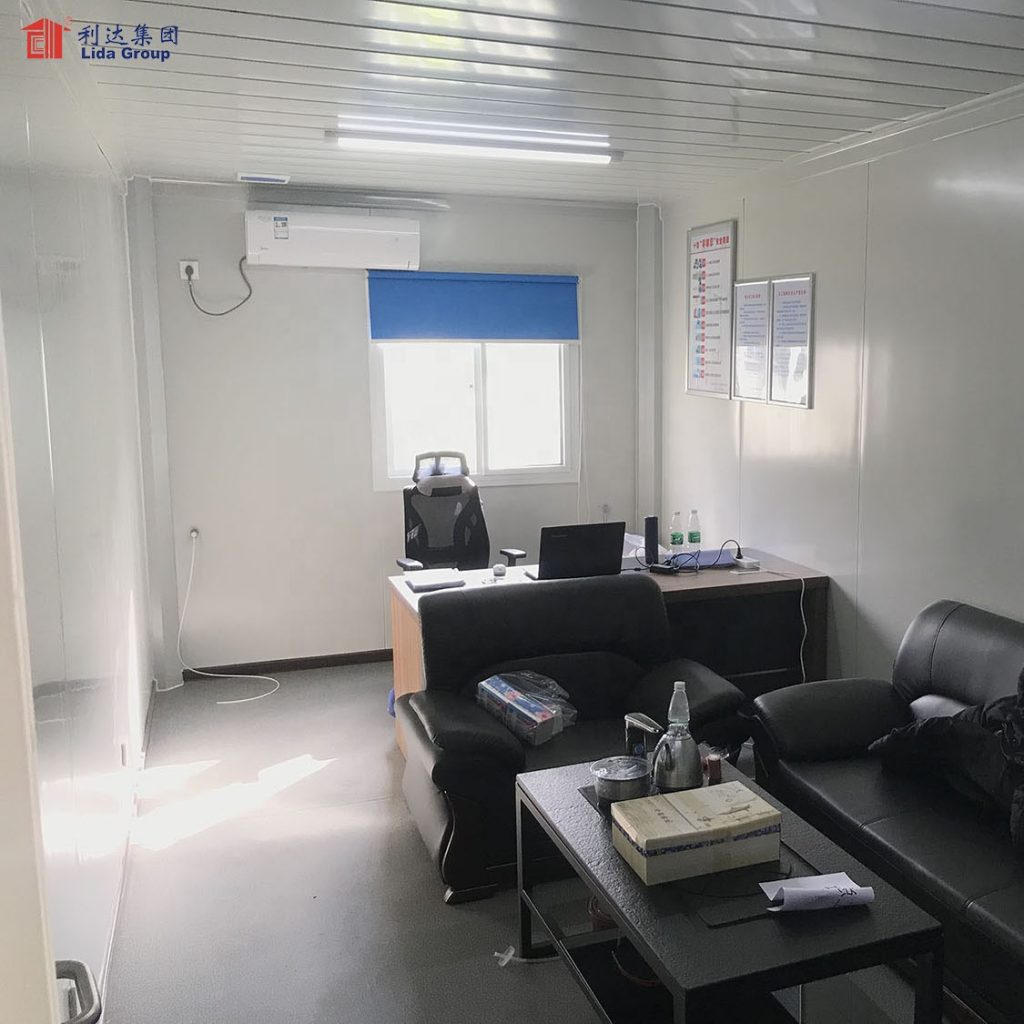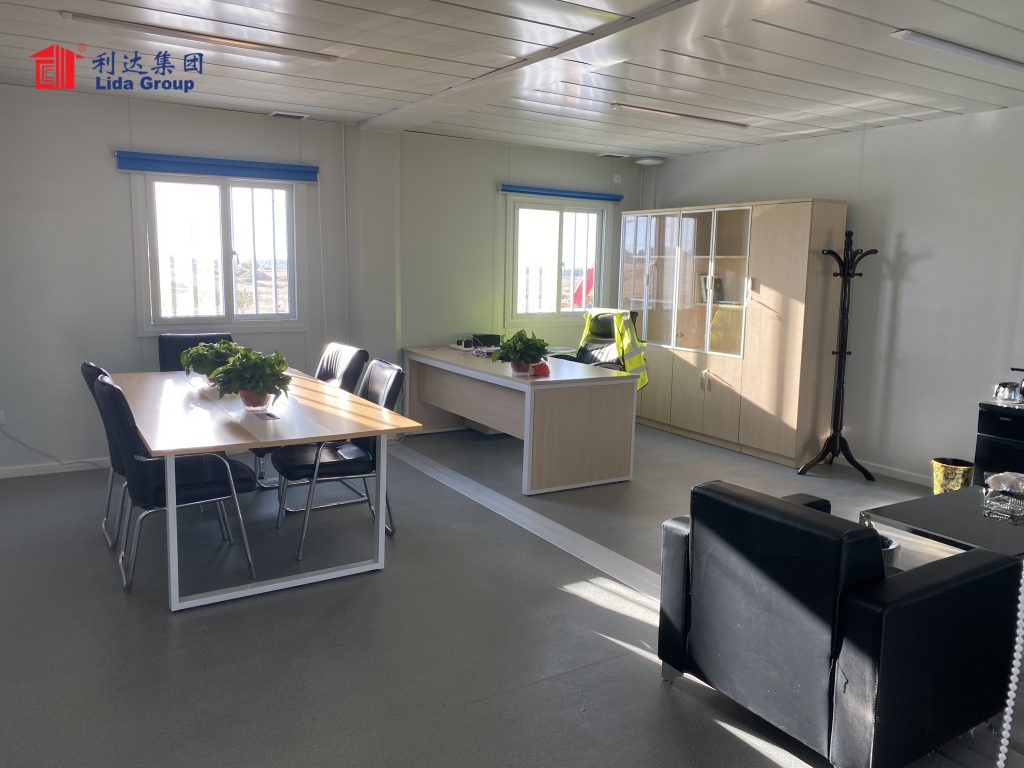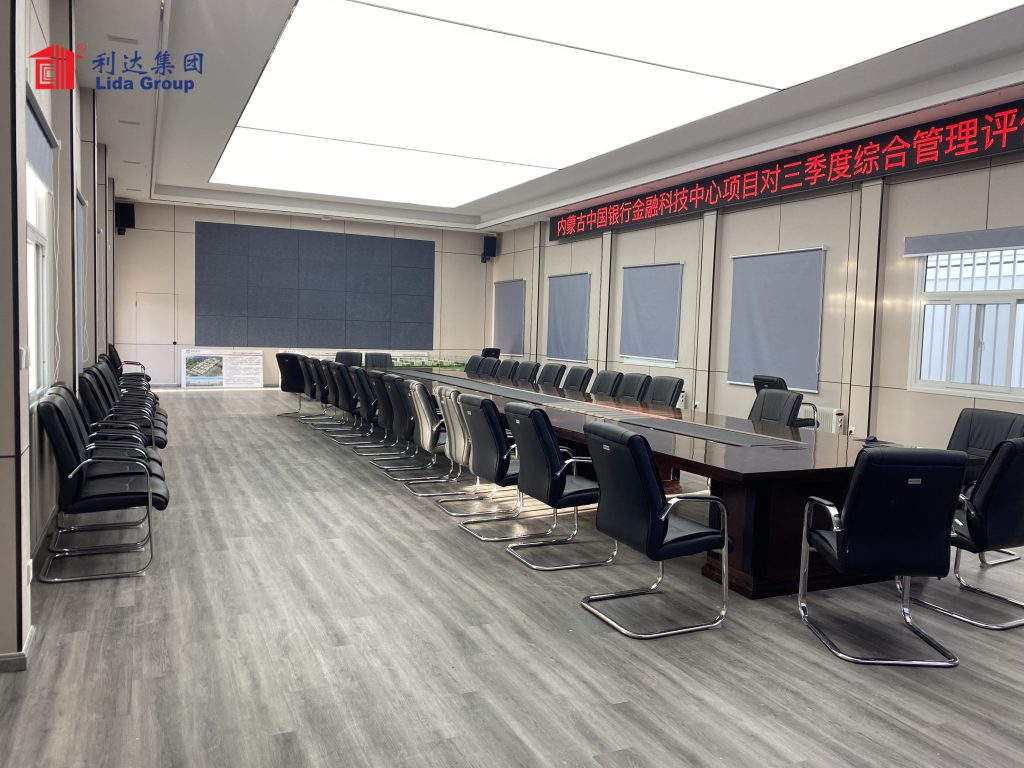Place of Origin: Shandong, China (Mainland)
Brand Name: Lida
Material: Sandwich Panel, Steel Structure
Use: Container House
Certificate: CE (EN1090), SGS ,BV, ISO9001, ISO14001, ISO45001
Delivery time: 15 to 30 days
Payment Terms: T/T, LC
Place of Origin: Shandong, China (Mainland)
Brand Name: Lida
Material: Sandwich Panel, Steel Structure
Use: Container House
Certificate: CE (EN1090), SGS ,BV, ISO9001, ISO14001, ISO45001
Delivery time: 15 to 30 days
Payment Terms: T/T, LC
Introduction:
In recent years, there has been a growing trend in the world of architecture and housing – the rise of container houses. These innovative structures, also known as shipping container homes, have captured the imagination of homeowners, designers, and environmental enthusiasts alike. With their unique blend of affordability, sustainability, and versatility, container houses have emerged as a promising solution to the pressing challenges of eco-friendly and affordable housing.
Container houses are built using repurposed shipping containers that would otherwise be discarded or left unused. By transforming these sturdy steel boxes into livable spaces, architects and builders are not only reducing waste but also providing an alternative to traditional construction methods. This eco-friendly approach aligns with the increasing demand for sustainable housing solutions that minimize our carbon footprint.
Furthermore, container houses offer an attractive option for those seeking affordable housing solutions. In a world where skyrocketing property prices often make homeownership seem like an unattainable dream for many individuals and families, container houses present a viable alternative. These cost-effective structures can be customized to meet specific needs while still offering comfortable living spaces.
In this section, we will delve deeper into the world of container houses and explore their various benefits and use cases. From exploring innovative designs to discussing their environmental impact and affordability factors, we will uncover why container houses are gaining popularity as a practical solution for modern living.
Join us on this journey as we unravel the potential behind this growing trend in architecture – container houses – and discover how they are reshaping our perception of eco-friendly housing and affordable living solutions.

The Advantages of Container Houses over Traditional Homes
Quick construction and easy transportation
Environmentally friendly building materials and reduced waste
Durability against harsh weather conditions and natural disasters
Versatility in design and customization options
Affordability compared to traditional housing options
Container houses offer numerous advantages over traditional homes, making them a compelling choice for those seeking sustainable and cost-effective housing solutions. The concept of repurposing shipping containers into livable spaces has gained significant traction in recent years, and for good reason.
One of the key advantages of container houses is their modular construction. These homes are built using pre-fabricated shipping containers, which can be easily transported and assembled on-site. This not only reduces construction time but also minimizes the disruption to the surrounding environment. Additionally, the modular nature of container houses allows for easy expansion or relocation if needed.
Another advantage is that container houses are more cost-effective compared to traditional homes. The use of recycled shipping containers significantly lowers material costs, making them an affordable option for those on a budget. Furthermore, their energy-efficient design helps reduce utility bills in the long run.
Sustainability is a crucial aspect of container houses. By repurposing shipping containers that would otherwise go to waste, these homes contribute to reducing environmental impact. Additionally, container houses can incorporate eco-friendly features such as solar panels and rainwater harvesting systems, further enhancing their sustainability credentials.
In conclusion, container houses offer a range of advantages over traditional homes. From their sustainable construction methods to their cost-effectiveness and energy efficiency, these innovative dwellings provide an attractive alternative for individuals seeking a greener and more affordable housing solution.
In recent years, container houses have gained immense popularity as an innovative and sustainable housing solution. These unique structures not only offer a cost-effective and eco-friendly alternative to traditional homes but also provide endless opportunities for creative design and functional layouts.
When it comes to container house designs, there are numerous inspiring examples that showcase the perfect blend of beauty and functionality. Architects and designers around the world have pushed the boundaries of what can be achieved with shipping containers, transforming them into stunning living spaces that defy conventional expectations.
One remarkable example is the “Container Guest House” in Japan, designed by renowned architect Shigeru Ban. This elegant structure features a series of interconnected containers, creating a spacious and visually striking residence. The clever use of glass panels allows natural light to flood the interior while providing panoramic views of the surrounding landscape.
Another awe-inspiring design is the “Crossbox House” in France, designed by CG architectes. This contemporary home features four stacked shipping containers arranged in a cross-shaped configuration. The result is a harmonious blend of modern aesthetics and practicality, with each container serving as a distinct living area or functional space.
For those seeking a more unconventional approach, there is the “Flying Box Villa” in Switzerland by Ralph Germann Architectes. This architectural masterpiece takes advantage of its scenic location by suspending two shipping containers over a steep slope. The suspended design not only creates an illusion of weightlessness but also maximizes breathtaking views from every angle.
These examples demonstrate how container houses can transcend their humble origins to become stunning works of art that seamlessly integrate form and function. From creative layouts that optimize space utilization to innovative use of materials and technologies, these designs inspire us to reimagine what is possible with shipping containers.
Whether you’re considering building your own container house or simply seeking inspiration for architectural marvels, these examples serve as testaments to the boundless potential that lies within this sustainable housing trend.

The Process of Building a Container House: Steps to Consider
Building a container house is an innovative and sustainable approach to housing. However, it is important to understand the process and steps involved in constructing a container house, as well as the permits and regulations that need to be considered.
The first step in building a container house is to carefully plan and design the layout. This involves determining the number of containers needed, their placement, and any modifications or additions that need to be made. It is crucial to ensure that the design meets your specific needs and adheres to local building codes.
Once the design is finalized, obtaining the necessary permits and understanding the regulations for container homes becomes essential. Each region may have different requirements regarding zoning, building codes, and safety standards. It is crucial to consult with local authorities or professionals who specialize in container home construction to ensure compliance with all regulations.
After obtaining the necessary permits, the next step involves site preparation. This includes clearing the land, leveling it if required, and ensuring proper drainage. It is important to consider factors such as access for construction equipment and utilities connections during this stage.
Once the site preparation is complete, actual construction can begin. The containers are delivered to the site and secured in place according to your design plans. Structural modifications such as cutting openings for doors and windows are made at this stage.
Following structural modifications, insulation installation becomes crucial for maintaining comfortable temperatures inside the container house throughout different seasons. Electrical wiring, plumbing systems installation follows suit along with any other desired amenities such as heating or cooling systems.
Finally, interior finishing touches are added which include flooring options, wall finishes, cabinetry installation along with any additional customization you desire for your container home.
In conclusion, building a container house requires careful planning from start to finish while considering all relevant permits and regulations specific to your location. By following these steps diligently while adhering to local guidelines ensures not only a safe but also an efficient construction process resulting in a unique living space that truly reflects your personal style and values.
Container houses have gained significant attention in recent years due to their sustainability benefits and the potential for reducing our carbon footprint. By upcycling shipping containers into livable spaces, we can make a positive impact on the environment while creating unique and innovative homes.
One of the key advantages of container houses is their ability to repurpose existing materials. By utilizing shipping containers that would otherwise go to waste, we can reduce the demand for new construction materials and minimize the environmental impact associated with traditional home building methods. This upcycling approach not only saves resources but also reduces energy consumption and greenhouse gas emissions.
Container houses are inherently eco-friendly due to their efficient use of space and insulation properties. These structures can be designed to maximize natural light, ventilation, and energy efficiency, resulting in reduced reliance on artificial lighting and heating or cooling systems. Additionally, container homes often incorporate sustainable features such as rainwater harvesting systems or solar panels, further minimizing their environmental footprint.
Living in a container house provides an opportunity for individuals to embrace a more sustainable lifestyle by adopting eco-friendly practices. Residents can explore various environmentally conscious choices such as composting, recycling, or using renewable energy sources. By making conscious decisions about consumption and waste management, container house dwellers contribute towards a greener future.
In conclusion, evaluating the environmental impact of living in a container house reveals numerous sustainability benefits. From reducing carbon emissions through upcycling containers to embracing eco-friendly practices within these unique living spaces, container houses offer an attractive option for those seeking a more environmentally conscious lifestyle.

Conclusion: Embrace an Innovative Lifestyle with Container Houses
In conclusion, embracing an innovative lifestyle with container houses offers a practical solution to housing shortages and environmental concerns. Container homes provide an opportunity for affordable and sustainable living, allowing individuals to reduce their carbon footprint while enjoying a unique and modern living space.
By utilizing repurposed shipping containers, these homes offer a cost-effective alternative to traditional housing options. They can be customized to meet individual needs and preferences, creating comfortable living spaces that are both functional and aesthetically pleasing.
Furthermore, container houses promote sustainability by reducing waste and minimizing the use of new construction materials. By repurposing existing containers, we can contribute to a more environmentally friendly approach to housing.
Embracing container houses not only addresses the pressing issue of housing shortages but also encourages a shift towards more sustainable lifestyles. It allows individuals to live in harmony with the environment while enjoying the benefits of affordable and innovative housing solutions.
So why not embrace this innovative lifestyle? By choosing container homes, we can make a positive impact on our communities and the planet as a whole. Let us open our minds to new possibilities and create a future where affordable, sustainable living is within reach for everyone.

Our team will use our experience to provide the professional services .
